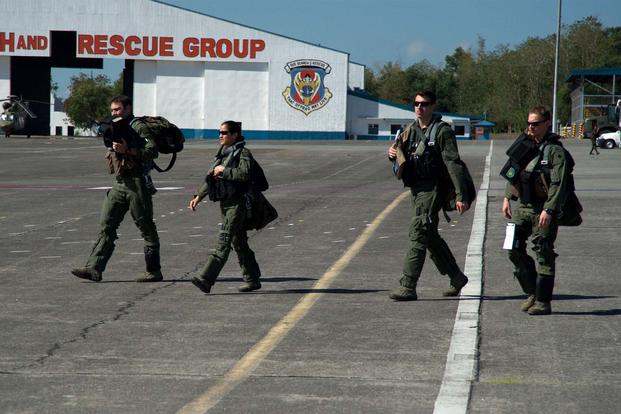The Air Force's pilot shortage has climbed to about 2,000 airmen even as officials work to keep them in cockpits, the service's top leaders said Thursday.
As the final numbers were tallied for fiscal 2017, leaders said they weren't surprised at the number of vacancies.
"Last summer, we were reporting to people that we were about 1,500 pilots short in the Air Force -- and we expected it to get worse," Air Force Secretary Heather Wilson told reporters during a briefing at the Pentagon.
"Almost 2,000 pilots short of a force that has 20,000 pilots, so that's one in 10 that we're short," Wilson said, alongside Chief of Staff Gen. David Goldfein.
Related content:
- Air Force Working Through Implementation of Trump's Pilot Recall Order
- Trump Lets Air Force Recall 1K Retired Pilots
- If You're a Retired Pilot, the Air Force Wants You Back
They didn't detail what type of pilots are most needed, but Wilson stressed the service's overall readiness -- from aircrew to spare parts, flying hours and munitions -- is facing shortfalls.
"Increasing the readiness of the force so that we win any fight, anytime are our top priorities," she said.
Wilson blamed the readiness crisis on the service being too small "for all the missions that we're being asked to carry out."
"Surge has become the new normal in the U.S. Air Force -- and you can do that maybe for about a year, two years, maybe three or four years," she said. "Less than 1 percent of Americans serve in uniform ... and they are carrying a very heavy burden."
The Air Force has announced a number of initiatives to stave off the growing hole in its pilot force.
Last month, President Donald Trump signed an executive order to voluntarily recall up to 1,000 pilots back to active duty. The Air Force recently said it's still working through how best to implement the measure.
Executive Order 13223 is an addendum of the Voluntary Retired Return to Active Duty, or VRRAD program, instituted by the service in July to welcome back retired pilots into active-duty staff positions, according to Brig. Gen. Mike Koscheski, the Air Force Aircrew Crisis Task Force director.
The authorities were "previously there," he said, but limited. "Now the numbers are greater."
Additionally, "we now have options for a longer assignment cycle," Koscheski told reporters in October.
He added, "This is going to be a case-by-case basis. Every assignment will be a handmade, wooden shoe because it will depend."
"My 85-year-old dad, who flew F-4s in Vietnam, and his fellow retirees -- they're all excited about coming back," Goldfein joked on Thursday. (The age cap for VRRAD staff positions is 60.)
In addition, the Air Force this summer announced an increase to flight incentive pay and aviation bonus programs -- with bonuses of up to $455,000 over 13 years for some fighter pilots.
The executive order and incentives come at a time when the service is losing pilots to the commercial aviation industry, which can offer higher pay and more stable schedules.
"We're doing a number of things to try to move out and increase production -- but that's going to be a longer-term investment," Goldfein said.
Wilson added, "You can't train a pilot in just a year. You have to absorb them into a squadron, get them qualified in a weapons system."
When asked if Air Force fighter squadrons -- those on the front lines in the fight against the Islamic State in Iraq and Syria -- have suffered because of the gap, Goldfein said, "We haven't yet.
"But if we don't turn this around through all the efforts that we're working on, then we'll end up heading down that [detrimental] path," he added.
-- Oriana Pawlyk can be reached at oriana.pawlyk@military.com. Follow her on Twitter at @Oriana0214.













